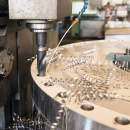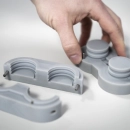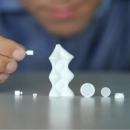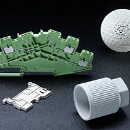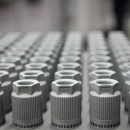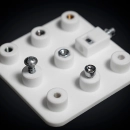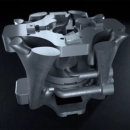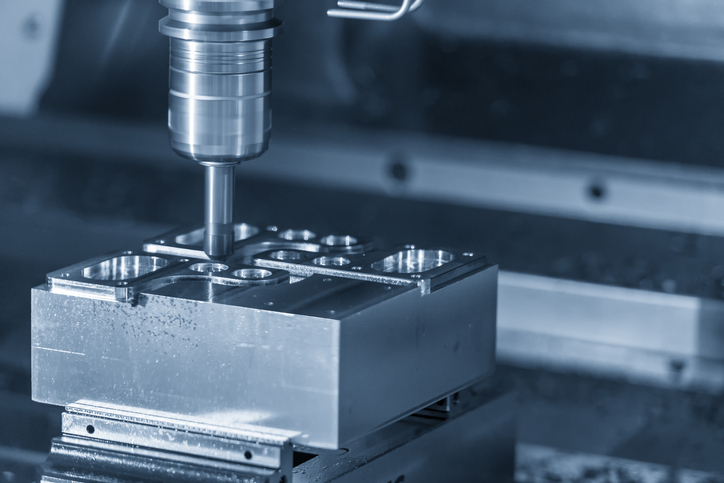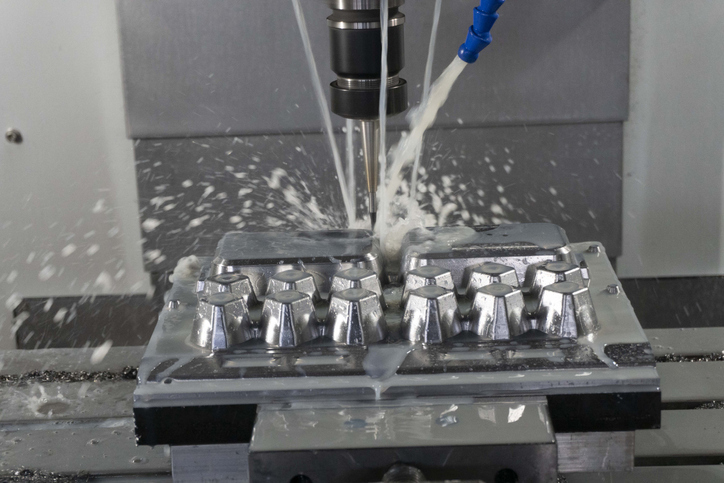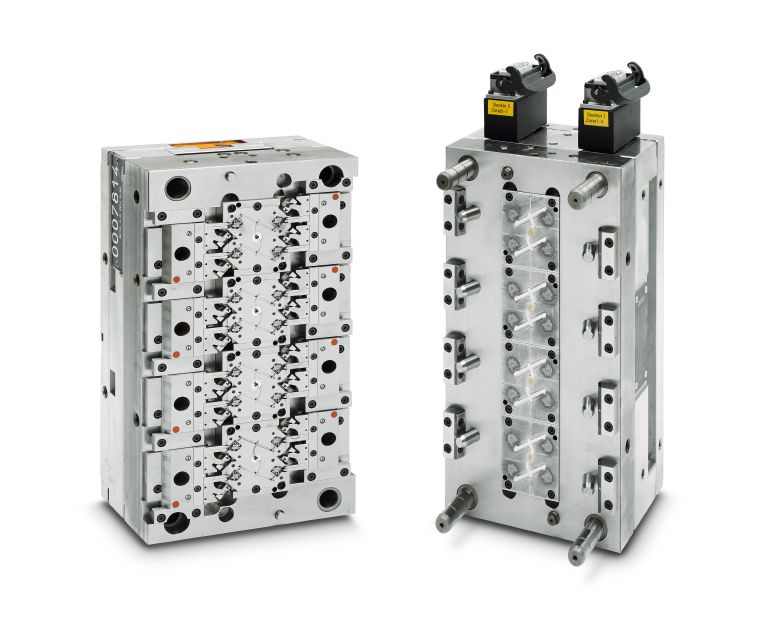CNC Machining
CNC machines enable the precise and automatic production of complex workpieces made of different materials. With the help of modern control technology, they move either the workpiece or the tool along the machining axes. By using 5-axis CNC machines and newer models with even more axes, workpieces can be machined efficiently and cost-effectively in just one setup.Order CNC turned and CNC milled components easily online.
On the PROTIQ Marketplace you can order your turned and milled components directly online, as you are used to from other online stores - despite the highly individual components. Upload your 3D data in STEP format and get an instant quote within a few clicks through the automatic online calculation. Choose from different materials and processes, and compare the transparent prices of several manufacturing partners. Place the components in the shopping cart and place the order directly online. The marketplace provider you select can then start manufacturing directly. No hidden costs, no long waiting times.
Your advantages on PROTIQ Marketplace
- No waiting times due to manual quotation generation
- Instantly compare prices of different processes and materials
- Directly view the offers from different providers
- Place an order within minutes
Many years of experience and high quality standards
PROTIQ Marketplace measures itself against the high requirements and quality standards of the industry. The quality of the services offered is a key pillar of this philosophy. Marketplace providers on the PROTIQ Marketplace are therefore expected to have a reliable quality assurance concept and corresponding certifications. For this reason, our marketplace participants undergo a multi-stage, personal qualification process prior to cooperation.
Toolmaking of the year
As a subsidiary of Phoenix Contact and formerly part of the internal toolmaking department, PROTIQ itself is still strongly connected to its origins. Phoenix Contact's internal toolmaking department can already look back on more than 50 years of experience and is one of the best in the German-speaking world. As a participant in the renowned "Excellence in Production" competition, the toolmaking department has already been named overall winner and "Toolmaker of the Year" twice, beating out world-renowned competitors.
Our processes
Machining is a subtractive manufacturing process used to generate 3D objects from, for example, plastic or metal by removing material from a solid blank. The collective term of machining encompasses a group of manufacturing processes that follow this processing principle. The most widespread manufacturing processes in this group are turning and milling.
CNC turning is a special form of machining used to produce rotationally symmetrical components made of metal or plastic, for example. In contrast to milling, where the tool is moved along a geometrically determined cutting edge, CNC turning involves machining by rotating the tool around the workpiece axis to be machined. This movement makes it possible to generate the workpiece geometry by means of a single tool cutting edge.
A further distinction is made between conventional and CNC (Computerized Numerical Control) machining. The main difference is that conventional turning and milling are manually controlled, whereas CNC turning and CNC milling are numerically controlled with a high degree of automation. This means that several process steps, such as moving the axes, cutting speed and feed, can be carried out simultaneously. Based on the high reproducibility, CNC milling is suitable for single orders as well as for the machining of small to medium series.
What is needed for CNC machined parts?
The basis of the processing is a CAD model. To order CNC machined parts via Protiq Marketplace, this file is required in STEP format. The model is converted into a CNC manufacturing program by the operator. The CNC program contains individual commands such as traverse paths, feed, infeed and spindle movements, speeds, required tools and additional functions such as switching coolant on or off. This so-called G-code can be processed and executed by the CNC machine.
The advantages of CNC machining
- Precision and accuracy: CNC machines can produce complex workpieces with high precision and accuracy
- Repeatability: Repeat the same process several times with identical results
- Short lead time: Produces workpieces faster than conventional manual processes
- Scalability: Suitable for both single pieces and small series
How does the manufacturing process of CNC parts work?
In the first step of the manufacturing process, the workpiece to be machined is clamped firmly on the machine table. The component is shaped by circular chip removal from the workpiece with the help of the special cutting tool, the milling cutter. During machining, the cutter is moved along the stationary workpiece to be machined. The final contour of the component is approximated more and more precisely in the manufacturing process through several passes. Depending on the component geometry and complexity, reclamping of the workpiece may be necessary due to the accessibility of certain areas of the component. The need for reclamping varies based on the machine system used. A 3-axis system with degrees of freedom in the X, Y and Z axes requires a higher number of workpiece fixtures than a simultaneous 5-axis milling system. The latter offers two more degrees of freedom due to the possibility of rotating the workpiece as well as the tool. At best, the requirement for reclamping can thus be completely eliminated.
In contrast to milling, only rotationally symmetrical components are machined in CNC turning. The workpiece is rotated by a spindle and moved along the axis of rotation on a stationary, clearly defined cutting edge. CNC turning usually requires a higher number of workpiece setups than milling because the component is rotated during the machining process.
In modern machining centers, CNC turning and milling can be combined directly. In this way, the advantages of both processes are optimally exploited and the producible complexity of the component is maximized.
What are the limitations?
According to the sequence of the manufacturing process, components with straight edges and surfaces are particularly suitable for CNC milling. The greatest limitation in CNC milling is tool accessibility, so that material can only be removed in areas that are accessible to the tool. Compared to 3D printing, the limit of design freedom is therefore somewhat lower for this manufacturing process.
CNC turning is used primarily for rotationally symmetrical components. This results in significant limitations on the geometry that can be produced. A combination or subsequent milling process can significantly increase the manufacturable complexity.
In general, CNC milling and CNC turning are characterized by their accuracy as well as the special degree of precision with simultaneously excellent material and surface properties, very high reproducibility and speed.
Application areas of CNC milling
Especially for the production of tight tolerances on high-quality metal components, CNC-supported milling processes have developed as the standard in the industry. Both prototypes and small to medium-sized series productions can be covered with the right processes and machines.
Mechanical and plant engineering
Many components for machine and plant construction are traditionally manufactured by milling. The combination of high precision requirements and low quantities predestines this manufacturing process for such applications. The components range from simple geometries to very complex components. For example, we offer the production of components from high-strength tool steels as well as from lightweight aluminium materials. Functional components for special applications can be milled from brass and copper.
Finishing of 3D-printed components by milling
Components produced using additive manufacturing processes are convincing due to the increased design freedom and the simple reproduction of very complex structures. However, functional surfaces and areas with special requirements for accuracy or surface quality, for example, must be reworked using milling technology. By combining the advantages of both manufacturing processes, geometric freedom in 3D printing and manufacturing accuracy in CNC milling, components can be produced that were not possible with only one of the two processes.
Tooling
Components for the construction of tools from injection moulding or stamping and forming technology generally have complex geometries with very high precision requirements at the same time. At the same time, particularly high strengths and hardnesses of the material used are often required. On the PROTIQ Marketplace you are sure to find exactly the right partner for the production of your tool components.
Prototyping and series production
Due to the flexibility of CNC milling, the process is suitable for prototypes with small quantities as well as for small to medium-sized series. Regardless of whether the number of pieces is one or one hundred, all suppliers on our marketplace process your orders conscientiously and with a high level of competence. With the help of the upload function and subsequent automated price calculation, you have the possibility to obtain an official offer within minutes and place the order with your desired partner.



 Deutsch
Deutsch English
English

